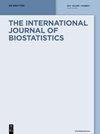二元结果无协变量随机临床试验的优化设计目标:模拟研究
IF 1.2
4区 数学
引用次数: 30
摘要
我们在这里进行了一项全面的模拟研究,该研究是我们在一篇同伴文章中得出的,该文章致力于在随机临床试验(rct)中采用二元治疗、二元结果和无协变量的情况下,对自适应组序列设计进行渐近研究。通过自适应设计,我们的意思是在这种情况下,RCT设计允许研究者根据迄今为止累积的数据,通过数据驱动的随机化概率调整来动态修改其过程,而不会对试验的统计完整性产生负面影响。通过自适应组序列设计,我们指的是组序列测试方法可以同样很好地应用于自适应设计之上。仿真研究验证了理论的正确性。值得注意的是,在估计框架中,即使对于中等样本量,我们获得的置信区间也达到了期望的覆盖率。此外,在测试框架中,可以保证在规定的水平上控制第一类误差,并且所有采样过程只会受到第二类误差的非常轻微的增加。一个三句话的关键信息是“自适应设计确实学习目标最佳设计,并且在自适应抽样下可以进行推理和测试,就像在目标最佳随机化概率抽样下一样。”特别是,自适应设计可以达到与固定oracle设计相同的效率。模拟研究证实了这一点,至少对于中等或较大的样本量,在大量目标随机化概率的集合中。”本文章由计算机程序翻译,如有差异,请以英文原文为准。
Targeting the Optimal Design in Randomized Clinical Trials with Binary Outcomes and No Covariate: Simulation Study
We undertake here a comprehensive simulation study of the theoretical properties that we derive in a companion article devoted to the asymptotic study of adaptive group sequential designs in the case of randomized clinical trials (RCTs) with binary treatment, binary outcome and no covariate. By adaptive design, we mean in this setting a RCT design that allows the investigator to dynamically modify its course through data-driven adjustment of the randomization probability based on data accrued so far without negatively impacting on the statistical integrity of the trial. By adaptive group sequential design, we refer to the fact that group sequential testing methods can be equally well applied on top of adaptive designs. The simulation study validates the theory. It notably shows in the estimation framework that the confidence intervals we obtain achieve the desired coverage even for moderate sample sizes. In addition, it shows in the testing framework that type I error control at the prescribed level is guaranteed and that all sampling procedures only suffer from a very slight increase of the type II error. A three-sentence take-home message is “Adaptive designs do learn the targeted optimal design and inference and testing can be carried out under adaptive sampling as they would under the targeted optimal randomization probability iid sampling. In particular, adaptive designs achieve the same efficiency as the fixed oracle design. This is confirmed by a simulation study, at least for moderate or large sample sizes, across a large collection of targeted randomization probabilities.”
求助全文
通过发布文献求助,成功后即可免费获取论文全文。
去求助
来源期刊

International Journal of Biostatistics
Mathematics-Statistics and Probability
CiteScore
2.30
自引率
8.30%
发文量
28
期刊介绍:
The International Journal of Biostatistics (IJB) seeks to publish new biostatistical models and methods, new statistical theory, as well as original applications of statistical methods, for important practical problems arising from the biological, medical, public health, and agricultural sciences with an emphasis on semiparametric methods. Given many alternatives to publish exist within biostatistics, IJB offers a place to publish for research in biostatistics focusing on modern methods, often based on machine-learning and other data-adaptive methodologies, as well as providing a unique reading experience that compels the author to be explicit about the statistical inference problem addressed by the paper. IJB is intended that the journal cover the entire range of biostatistics, from theoretical advances to relevant and sensible translations of a practical problem into a statistical framework. Electronic publication also allows for data and software code to be appended, and opens the door for reproducible research allowing readers to easily replicate analyses described in a paper. Both original research and review articles will be warmly received, as will articles applying sound statistical methods to practical problems.
 求助内容:
求助内容: 应助结果提醒方式:
应助结果提醒方式:


